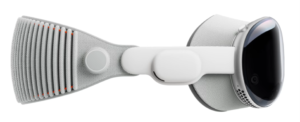
Revolutionizing Spatial Computing and Expanding Industry Endorsement
Musings #1 about Vision Pro… lots of discussion out there that it reminds people of efforts Magic Leap has been making. There are a couple notable differences however that cannot be ignored. First is that Apple will create a much more frictionless experience — critical with any new technology. For all that Magic Leap has accomplished, ease of use and intuitive onboarding unfortunately hasn’t been their primary focus. Apple will change that. Second, Vision Pro will be leveraging the Apple ecosystem, something Magic Leap obviously could never do.
This is the Apple way — beautiful form factors, ease of use, intuitive, and seamlessly tied into its existing ecosystem.
To read all of Rob’s commentary on Apple Vision Pro click here: Part 2, Part 3, Part 4, Part 5, Part 6, Part 7, Part 8, Part 9, Part 10
